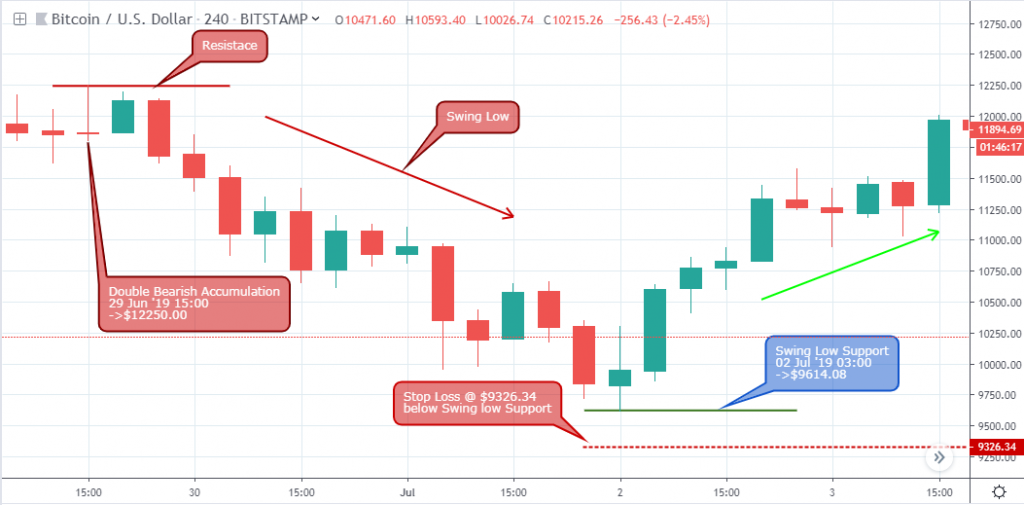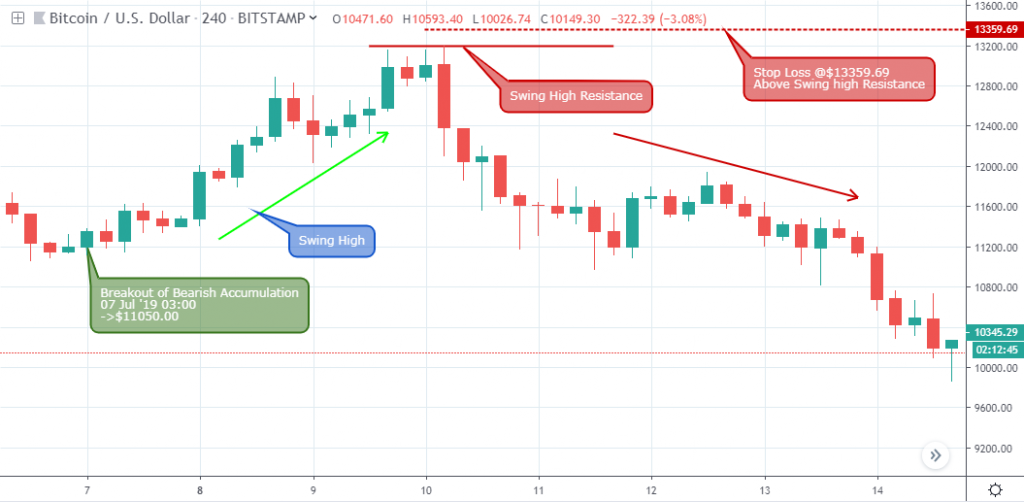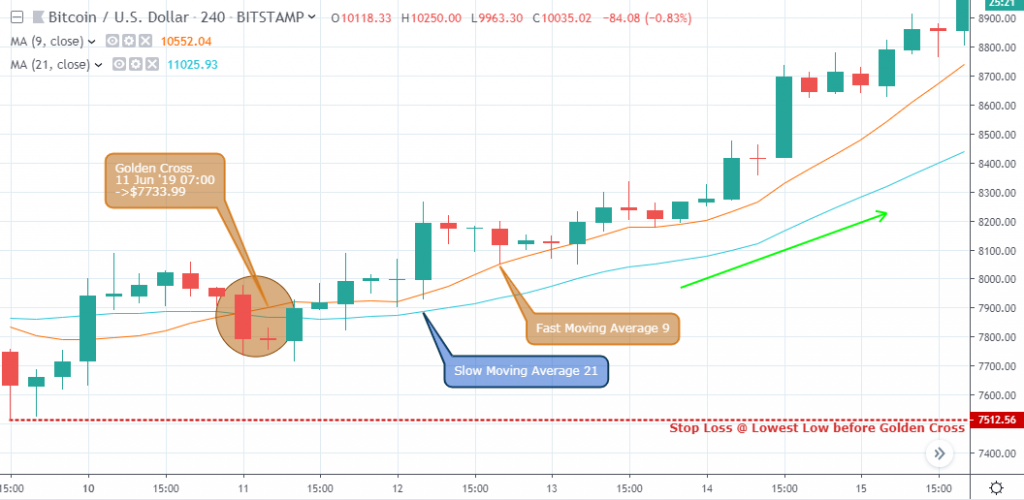A stop-loss order is an instruction that you place on your trade that automatically triggers the closure of your position at a specific price.
[wlm_private “Crypto Trader Pro – Monthly|Crypto Trader Pro – Yearly|Crypto Trader Pro (Lite)”]
Traders set it either to moderate risk or to preserve a part of existing earnings in a trading position. Essentially and importantly, a stop-loss order activates a market order once it triggers a price level.
Example:
You have $10,000 in your account. Let’s say you risk 5% of your balance, which is $500. With the current Bitcoin (BTC) price at $5000, you place a buy order and set your stop-loss at $4500. If the price reaches $4500, your stop-loss order will execute, preventing further loss on your account. The limit of your risk of loss on the trade is $500.
Most crypto trading platforms offer a stop-loss order option to the trader so they have the ability to make changes during the life span of a trade.
Successful traders usually use several money management tricks, including stop-loss orders as part of their money management and trading strategy, however, for traders to be successful, they must know how and when to place a stop-loss order.
Here are some suggested strategies when implementing a stop-loss order.
Define Your Stop Loss Strategy
As we mentioned above, a stop-loss order is part of the smart trader’s trading and money management plan. This plan helps solidify strategies such as how and when to enter trades, control risk, and exit from successful trades. Drawing up a plan means that you have done your research and have identified what works for you.
When these questions are answered based on proper analysis and in-depth thinking, placing your stop loss level becomes a straightforward business. You, therefore, shouldn’t put your stop-loss levels at some random locations, but rather a strategic position based on testing, research, and practicing multiple methods.
Methods on Deciding on Stop Loss levels
Conventional wisdom reveals that the best point to place a stop loss is at the position which gives the market adequate room to fluctuate a little while it tilts in your favor, but gets you out of your trade if the price turns against you.
Methods for setting up stop-loss levels
Below a “swing low” formula
It is one of the simplest methods in deciding where to place a stop-loss order when buying.
A “swing low” occurs when the price drops and then bounces, showing that the price found some base at that level.

With this in mind, it is easy for you to understand through the chart where to place a stop-loss order. As you buy, the swing lows should go up.
Above a “swing high” method
This method is more practicable when short selling. A swing high occurs when the price rises and then falls. It shows that the price found resistance at that level.

When looking for short trades, the swing highs should go downward. This indicator can inform you of where to peg your stop loss level.
Using technical indicators
The above two options do not represent the only options. You can also place your stop loss at other points in the trade.
We can also use technical indicators to set the stop loss level.
For example, if an indicator presented you with a buy (go long) flag, we can locate a stop loss at a price level where the indicator will no longer signal it as being smart to go long.

An example is a cross of fast and slow Moving Averages. If the fast Moving Average crosses above the slow Moving Average, a safe place for your stop loss will be at a safe distance below the slow Moving Average, as shown in the chart above.
Depending on the level of risk that you’re willing to take, be sure to set your stop loss order within a margin that doesn’t cut deeply into your pocket. Check your orders and continue to assess and reassess market analysis to make adjustments.
Disclaimer
Content provided by CryptoTraderNews is for informational purposes only, and should not be construed as legal, tax, investment, financial, or other advice. All information is of a general nature. As always, there is risk with any investment. In exchange for using our products and services, you agree not to hold CryptoTraderNews Pro, its affiliates, or any third party service provider liable for any possible claim for damages arising from decisions you make based on information made available to you through our services.
[/wlm_private]
Want to read the rest of the article? Join our pro-membership and receive all of the following:
✅Access to ALL content.
✅Access to the CTN editorial staff.
✅Access to our CTN trading dashboard.
✅Access to our exclusive telegram channel where all our pro-members and editorial staff are in.
✅Ability to request content/research material!
